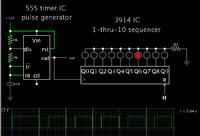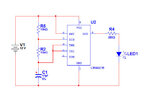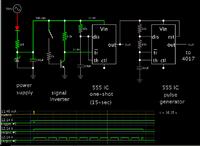holabr
Member level 2

I have a set of vintage door chimes that uses an electro-mechanical sequencer to activate a series of plungers to strike the chimes. The problem is the mechanism uses a low rpm motor to sweep a set of contacts over traces on a PC board to sequencially ring the chimes. It has worn to the point that it is no longer consistently rings the chimes. I'd like to build an electronic replacement and have a few questions.
1) What would be the best way to convert the 16 VAC pulse when you press the doorbell button into something the circuit can use to start the sequence?
2) I'm thinking of using a PIC to drive the circuit. This would be my first attempt. Is this overkill or would hard logic be better?
Because of the existing wiring in the house and the fact that the plungers require the 16 VAC transformer, changing over to some other power supply is not an option.
I'd appreciate any direction and examples of similar circuits as a starting point.
1) What would be the best way to convert the 16 VAC pulse when you press the doorbell button into something the circuit can use to start the sequence?
2) I'm thinking of using a PIC to drive the circuit. This would be my first attempt. Is this overkill or would hard logic be better?
Because of the existing wiring in the house and the fact that the plungers require the 16 VAC transformer, changing over to some other power supply is not an option.
I'd appreciate any direction and examples of similar circuits as a starting point.







